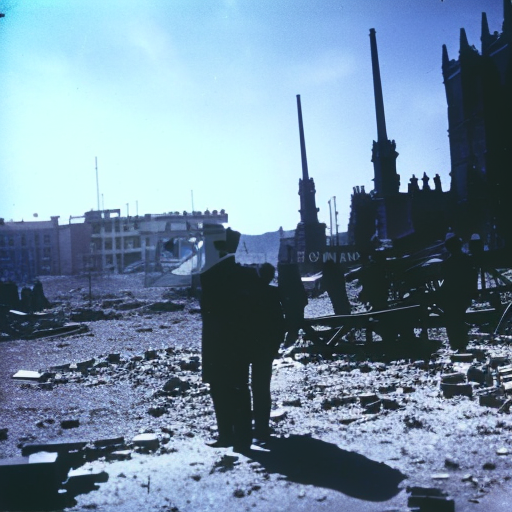Summary: 1908 Messina Earthquake
The 1908 Messina earthquake was a devastating natural disaster that struck the city of Messina in Sicily, Italy, on December 28, 1908. It is considered one of the deadliest earthquakes in recorded history, resulting in the loss of an estimated 75,000 to 82,000 lives.
The earthquake, with a magnitude estimated between 7.1 and 7.5, occurred at around 5:20 am local time. The initial shock lasted for approximately 30 seconds, causing widespread destruction throughout the region. The city of Messina, located near the epicenter, was particularly hard hit, with almost the entire city reduced to rubble.
The earthquake triggered a series of tsunamis that further exacerbated the destruction. These tsunamis, some reaching heights of up to 40 feet, swept inland, causing additional casualties and devastation. The combination of the earthquake and tsunamis resulted in the near-total destruction of Messina and the surrounding towns.
The response to the disaster was initially slow and disorganized. The Italian government, under Prime Minister Giovanni Giolitti, struggled to coordinate relief efforts due to the scale of the disaster and the lack of infrastructure in the affected areas. However, international aid soon began to pour in from countries such as the United States, France, and Russia.
The aftermath of the earthquake brought attention to the need for improved building codes and earthquake-resistant structures. The destruction caused by the earthquake highlighted the vulnerability of many buildings in the region, which were not designed to withstand such a powerful seismic event. This led to a reevaluation of construction practices and the implementation of stricter building codes in earthquake-prone areas.
The 1908 Messina earthquake also had significant political and social consequences. The disaster exposed the inefficiency and corruption within the Italian government, leading to public outrage and demands for reform. The response to the earthquake became a symbol of the broader issues facing Italy at the time, including poverty, inequality, and political instability.
In the years following the earthquake, efforts were made to rebuild the city of Messina and improve the region’s infrastructure. The reconstruction process was slow and faced numerous challenges, including bureaucratic hurdles and financial constraints. However, over time, the city was rebuilt, and measures were put in place to mitigate the impact of future earthquakes.
The 1908 Messina earthquake remains a significant event in Italian history and a reminder of the devastating power of natural disasters. It served as a catalyst for change, leading to advancements in earthquake engineering and disaster preparedness. The lessons learned from this tragedy continue to inform our understanding of seismic activity and the importance of proactive measures to protect vulnerable communities.












